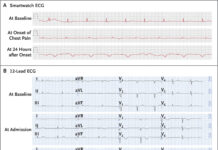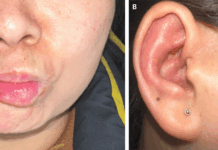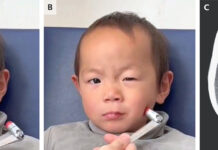Patient presented with an incisional keloid after undergoing thoracic surgery as a post-op complication. A 24-year-old man underwent thoracic surgery for pulmonary hydatid disease. 8 weeks later, the patient started developing tumor-like, asymptomatic cutaneous lesion over the site of incision. There was no itching or swelling and the lesion gradually progressed with subsequent weeks, protruding on the skin causing an apparent aesthetic deformity.
Keloids occur typically in response to dermal injuries, for example, inflammatory skin conditions, burns, lacerations and surgical wounds. However, surgical removal is generally not recommended because recurrence is common. Treatments including radiotherapy, laser therapy and glucocorticoid injection may be tried but usually have a poor response outcome.
Fibrous tissue called scar tissue forms over the wound to repair when skin is injured to protect the injury. In some cases, there is a growth of extra scar tissue, forming hard and smooth growths called keloids. In many cases, keloids can be much larger than the original wound. In addition to this, they are most commonly found on the cheeks, earlobes, shoulders and chest. However, they can affect any other part of the body also. Although keloids are not harmful to your health, they may create cosmetic concerns for many patients.
The patient was undergoing adjunct therapy with albendazole. The patient was diagnosed with keloid based on the clinical presentation of the lesion and history of the patient. Histopathology confirmed the lesion to be a keloid. As mentioned above, radiotherapy, laser therapy and glucocorticoid injections are generally not recommended because of poor response and risk of recurrence. Considering the large size of the lesion in the patient, surgical excision was performed and an immediate infiltration of glucocorticoids was also done.
There was no recurrence of the lesion after 1 month of the surgical excision. The patient was lost to further follow-up.
References
Valenzuela Salas, I., & Fernandez Miralbell, A. (2015). Incisional Keloid. New England Journal of Medicine, 372(15), 1453-1453.




